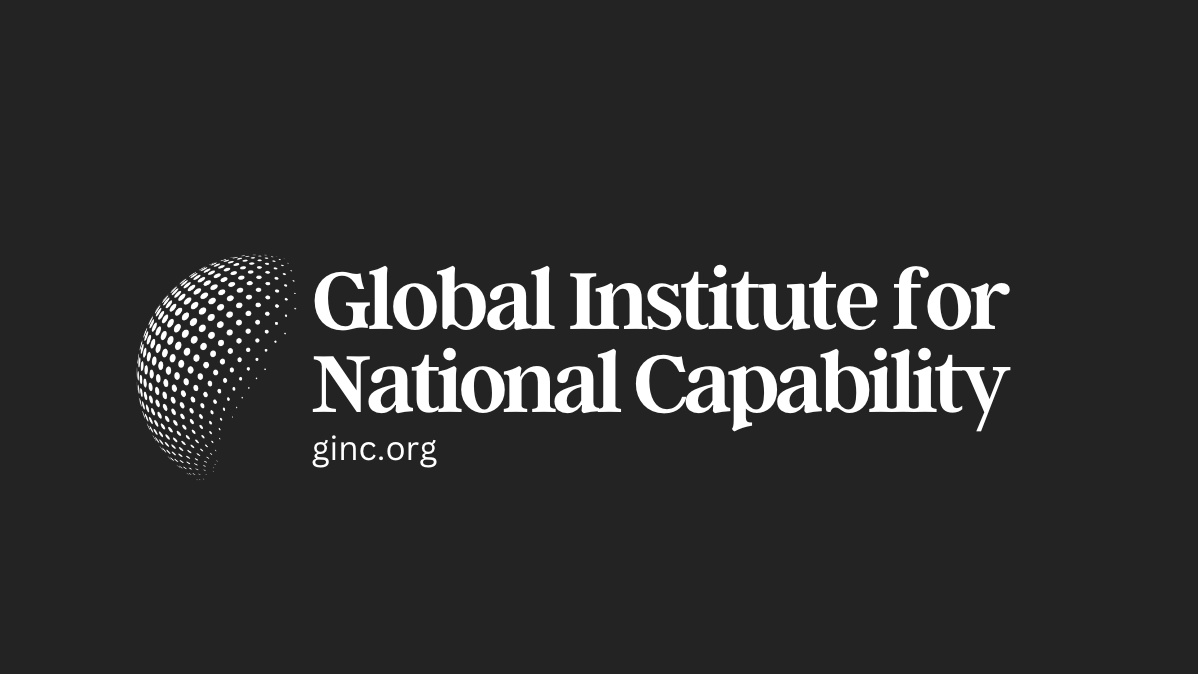GINC National Capability Ratings Rubric

This rating system evaluates a nation’s overall strategic capability in areas like defense, technology, and artificial intelligence. It reflects how prepared and competitive a nation is on the global stage, highlighting strengths, vulnerabilities, and potential for growth. Ratings range from AAA for world-leading nations to D for those experiencing total strategic collapse.
Short Description
A. Leading Capability.
B.
C. Emerging Capability.
D. Nil. No material identifiable or effective capability
Full System
AAA / Global Leader
A nation with unmatched dominance across defense, technology, and innovation. Sets the global standard, shaping international policies and technological trends.
AA+ / Near-Global Leader
Highly competitive with robust capabilities in most sectors. While slightly behind top-tier nations, it remains a key player influencing global affairs.
AA / Strong Innovator
Excels in critical areas but lacks complete dominance. Maintains a strong global presence but faces gaps that limit comprehensive leadership.
AA- / Established Power
A well-developed nation with strong influence, though certain sectors lag. Maintains resilience but must address vulnerabilities to compete with the top nations.
A+ – Strategic Competitor
Demonstrates strong capacity in various fields and is a formidable force. Lacks the overall dominance to lead but competes effectively in key areas.
A – Rising Power
Shows consistent growth and emerging global influence. Faces developmental hurdles that prevent it from becoming a top-tier competitor.
A- – Emerging Strength
A nation with developing strategic sectors and competitive ambition. Vulnerable to economic or technological shifts but on the path to greater influence.
BBB+ – Stable Player
Capable of regional or niche global influence but lacks comprehensive strength. Competence across sectors varies, creating inconsistencies in performance.
BBB – Regional Power
Strong within its region but unable to exert sustained global influence. Development remains uneven, limiting broader competitiveness.
BBB- – Regional Challenger
Shows potential but remains highly vulnerable to economic or political changes. Growth in key sectors is constrained, preventing stronger influence.
BB+ – Strategic Risk
Developing but with significant weaknesses. Holds promise in certain areas but lacks the stability needed for sustainable advancement.
BB – Niche Competitor
Competes effectively in select sectors but remains underdeveloped in others. Limited capacity to expand influence beyond specific areas.
BB- – Developing Nation
Displays growing capabilities but faces economic, political, or technological hurdles. Strategic progress is uneven and fragile.
B+ – Limited Capacity
Possesses isolated strengths but lacks comprehensive power. Struggles to build or sustain influence across multiple sectors.
B – Strategic Vulnerability
Highly dependent on external alliances or support to maintain relevance. Susceptible to geopolitical shifts and economic challenges.
B- – Strategic Fragility
Weak across most sectors, with limited potential for growth. Faces significant risk of falling behind or losing influence.
CCC+ – High Risk
Barely operational in key sectors and highly dependent on foreign aid or partnerships. Strategic progress is minimal and fragile.
CCC – Strategic Deficiency
Severely underdeveloped with little influence beyond its borders. Faces major internal barriers to advancement.
CCC- – Critical Weakness
Sectors are non-competitive or in a state of disrepair. The nation risks becoming irrelevant in global affairs.
CC – Near Collapse
Key sectors are failing with limited chances of recovery. The nation’s strategic capabilities are at the brink of collapse.
C – Strategic Breakdown
Little to no operational strategic sectors remain. The nation is incapable of participating meaningfully on the global stage.
D – Failed State
Total loss of strategic capability and influence. The nation experiences systemic collapse across defense, technology, and innovation.
